Final Fantasy 8 Remastered: the upgrades are sparse but the game still shines
How apt that in the week that Eurogamer itself celebrates its 20th birthday, a remaster should appear for one of 1999’s finest console releases. With Final Fantasy 8 Remastered, the hope is to get the definitive edition for PS4, Xbox One, PC and Switch. Two decades on from its original launch, it’s conspicuous in being the last FF of that era to get any form of HD treatment — and when you see the remaster in action, it’s clear why. As much as this new version takes steps in the right direction, there are points which are — sadly — a step back from the PlayStation original.
It’s a shame because Final Fantasy 8 was a landmark release, taking the technological triumphs of FF7 and significantly building upon them. The beautiful video sequences returned, for example, but this time pre-rendered scenes integrated more closely with what was then state-of-the-art 3D modeling. It’s an idea that FF7 toyed with at points, but it’s used far more extensively in its sequel to give a suitably cinematic presentation. The Dorrit mission for example, was used to demo the game ahead of release — an incredible set piece involving a mech crab chasing Squall through the streets. It meant we got visuals far beyond what PS1 hardware could ever realistically achieve in real time — by virtue of sheer brute force, filling four CDs with pre-rendered video sequences.
This combination of FMV and real-time 3D was an incredible feat of technology for its day, but Squaresoft pushed out the boat in many other ways, too. The score used higher quality sampling on PS1, with a focus on recorded vocal tracks. The engine also ran with higher-polygon character models for the main cast — meaning that Squall, Rinoa and Seifer appear in battle with the same model as the game’s traversal segments. Also, the large, intruding battle window of FF7 — which took up a good chunk of the screen’s lower half — is removed. Instead the entire frame shows the 3D action, overlayed with a transparent HUD for HP. Going from one to the other in the late 90s, it’s a huge improvement.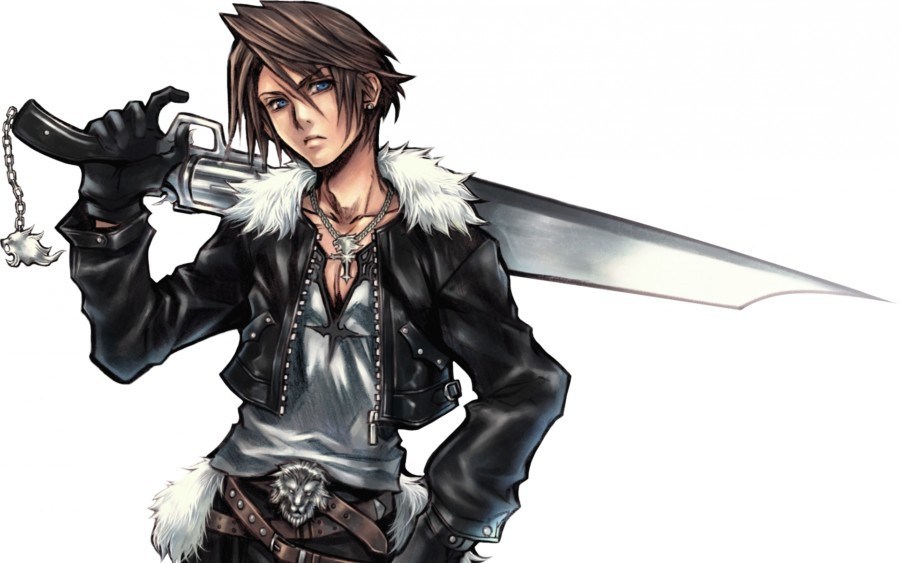
It’s a game ripe for remastering, but unfortunately, the end result is far from ideal. That’s not to say that there aren’t positives, however. The way I see it, there are three big advantages in playing the remaster, the first being that all character and enemy models get an HD reworking. The new designs for Squall, the guardian force summons, and everything in-between look clean, and far easier on the eye. It’s more consistent with the FMV versions of the characters in this sense, and that’s a good thing. In fact you’ll catch details that were easy to miss otherwise; the stitching on clothes or the scar on Squall’s face.
Watch on YouTube
Everything you need to know about the Final Fantasy 8 Remaster, presented in video form.
Secondly, we have the boosters. With a click of the analogue sticks you can speed the game up by 3x, turn off random encounters, or even increase HP and limit breaks. On the surface, it’s a bit of a cheat, but it’s become a routine extra for Final Fantasy remasters — even FF12 — to help with the grind of long dungeons. Often you’ll have settled on an attack pattern that just needs repeating over and over, so the 3x speed-up is especially great for blitzing through the repetition. It’s a big plus point over the original game, and gets you to the heart of what makes these games fun.
Often you’ll have settled on an attack pattern that just needs repeating over and over, so the 3x speed-up is especially great for blitzing through the repetition. It’s a big plus point over the original game, and gets you to the heart of what makes these games fun.
Resolution is the third point. The original game’s 320×240 with classic PS1 colour depth dithering is in full effect, while the remaster delivers a native 1920×1080 (even on PS4 Pro!). We weren’t sent Xbox or Switch versions, but it’s not difficult to imagine that these are locked to full HD too. Still, 1080p benefits anything rendered in real-time 3D — from the characters to the battle sequences, and the world map. Plus, the remaster also removes dithering artefacts for a much cleaner picture, though we’re still locked to a 4:3 aspect ratio.
The main problem is that all of the original backdrops and cut-scenes are still of a low quality, with only a smoothing filter added. The situation improves tremendously with the FMV sequences, which are far crisper and cleaner, but the jarring disparity between low resolution, blurry backgrounds and pristine 1080p 3D rendering just doesn’t work.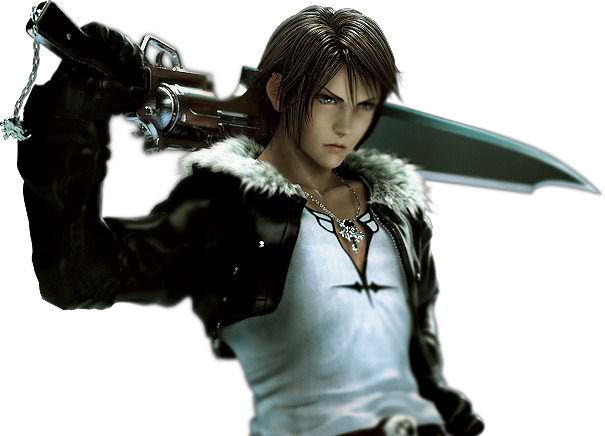 Machine learning upscaling is transforming the low res 2D bitmaps of yesteryear in many homebrew texture packs and I can’t help but think that a similar approach here may have paid dividends.
Machine learning upscaling is transforming the low res 2D bitmaps of yesteryear in many homebrew texture packs and I can’t help but think that a similar approach here may have paid dividends.
Meanwhile, the 3D aspects have issues too in that much of the core asset work is still based on 20-year-old artwork. Take the world map, for example. It’s entirely rendered in 3D, and the upgrade delivered via full HD resolution and actual texture filtering is tremendous. However, the textures themselves simply don’t have the clarity to work — perhaps not surprising when they are being asked to service a 20 times increase in resolution. As the developers swapped out the character models for higher quality versions, it’s a shame that the world map, at least, didn’t see similar treatment. It sticks out like a sore thumb — with terrible alignment between texture maps.
Remaster
OriginalVastly improved character models are one of the more positive features of the remaster.
Remaster
OriginalThe big problem with the remaster is the juxtaposition of pristine 3D models with blurry upscaled renditions of the original backgrounds.
Remaster
OriginalThis shot highlights the original PS1’s problems with low colour depth, resulting in an ever-present stippling. Obviously, this is gone on the remaster.
Remaster
OriginalAnother good example of the huge improvement in rendering of the key characters.
Remaster
OriginalThe 20x improvement in resolution does nothing to improve the core artwork, which looks misaligned and clumsy on the world map screen.
Remaster
OriginalThere’s strong evidence here that superior source assets for the video sequences remain. Resolution is still relatively low, but it’s a night and day improvement over the PS1’s original renditions.
Remaster
OriginalIt’s not all negative, however. The guardian force summons also benefits from enormous improvements in rendering quality.
Remaster
OriginalAnother example of how sympathetic reworkings of the original assets freed from the technical limits of the PS1 can deliver a nice upgrade.
Remaster
OriginalWhile poor texture filtering and dither are gone, the irony is that those PS1 limitations disguised shortcomings in the original artwork, especially evident on the world map.
Please enable JavaScript to use our comparison tools.
We can fairly assume the developers didn’t have the original source artwork, which may have been created originally at a higher resolution. This means that re-rendering with a full 1080p target wasn’t an option — instead it’s relying on assets plucked straight from PS1 or PC versions of the day. Indeed, based on early impressions of the remaster on PC, evidence suggests that all consoles are running a decompiled version of the original PC edition released in 2000 — possibly with some kind of x86 emulator. This may explain why the new release shares many of the more disappointing quirks of the original PC port, which compare unfavourably with the PS1 version.
Firstly, there are no analogue controls. It’s just like the PC version in that regard, which relied on keyboard arrow keys — giving you only eight directions of movement, even if you’re using PS4’s analogue sticks. The PS1 version gave you fine, 360 degree gradients of control on the analogue controller. It meant it was much, much easier to line up to an NPC and talk to them or to use draw points. As it is here though, you end up walking around like a robot. Equally, rumble is entirely missing from this version and so you don’t get any feedback during Squall’s limit breaks. In some respects, maybe just emulating the PS1 version would have given us a better time here.
It meant it was much, much easier to line up to an NPC and talk to them or to use draw points. As it is here though, you end up walking around like a robot. Equally, rumble is entirely missing from this version and so you don’t get any feedback during Squall’s limit breaks. In some respects, maybe just emulating the PS1 version would have given us a better time here.
Performance is something worth touching on. For context, the PS1 had a very unique setup with its Final Fantasy games. It was the early days of 3D on console and this meant that 30fps really was a luxury — and you often accepted even lower performance as a compromise in getting cutting edge visuals. For a game pushing the envelope as much as FF8, that meant running with hard frame-rate caps based on the situation. So, for example, you get 30fps for traversal on the world map or towns but battle scenes are capped at 15fps. Obviously, since the action’s turn-based in nature, it never affects the strategic element. The key aspect here is that the menus running over the top ran at 60fps on PS1, which meant the limit break indicators panned smoothly across the screen.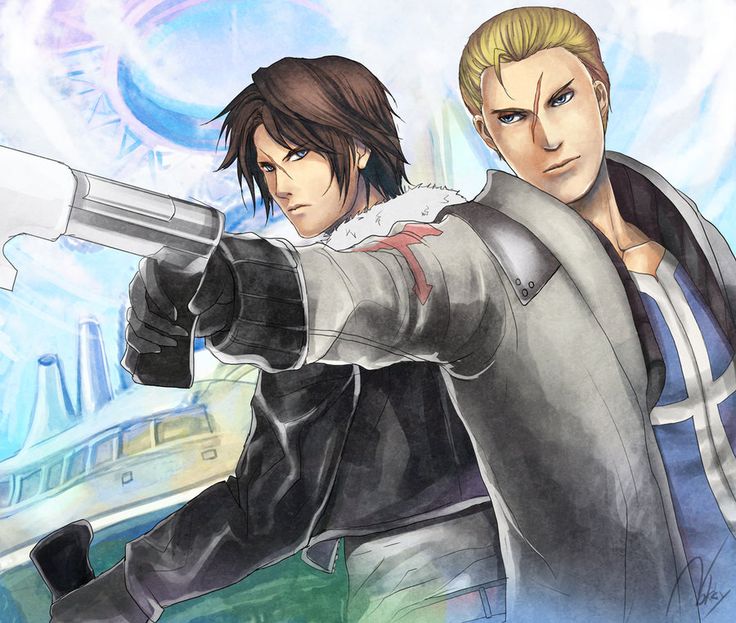
Final Fantasy 12 recently arrived on Switch and Xbox One, so we made a video about it. Oh, and how about some bonus Final Fantasy 10 remaster analysis too?
Performance is arguably worse in the remaster. The hard frame-rate ceiling still works as before; it runs at 30fps while travelling around, and there’s no real push to anything higher. In battle though, there’s a subtle change — a 16fps cap on the 3D rendered parts of the screen — 1fps higher than PS1. The twist here is that menus no longer run at 60fps, but sync up to the 3D action. Supposing you’re in battle, menus update in sync at 16fps, along with the gameplay — and unfortunately, this does affect playability. Limit attacks like Squall’s Renzokuken rely on timing an R1 press to a set rhythm, where now you have only a quarter of the visual feedback to work with. If you notice added input delay on menus in this remaster, this is part of the reason why: 60fps is now 16fps.
Despite its many issues, Final Fantasy 8 remains an incredible game to play today — but the notion that this remaster delivers an across-the-board upgrade is debatable at best. The frame-rate can be worse than PS1, we’re missing analogue controls, rumble support is gone and the visual upgrade isn’t consistent. The main advantage of playing this remaster is the boosters — and the upgraded models, which are nice additions. Thankfully, the beautiful art direction and soundtrack hold up really well, despite the limitations. The triple triad card mini-game is as addictive as ever, and in terms of world building, it’s full of charming details that add considerably to the greater whole.
The frame-rate can be worse than PS1, we’re missing analogue controls, rumble support is gone and the visual upgrade isn’t consistent. The main advantage of playing this remaster is the boosters — and the upgraded models, which are nice additions. Thankfully, the beautiful art direction and soundtrack hold up really well, despite the limitations. The triple triad card mini-game is as addictive as ever, and in terms of world building, it’s full of charming details that add considerably to the greater whole.
Technically, Final Fantasy 8 was clearly a pioneering effort for its use of animated backdrops. Its video elements combined effectively with in-engine modeling, at a time when console 3D was still very much in its infancy. For all the flaws of this remaster then, it’s worth checking out just to see how Squaresoft pushed PS1 technology still further after the game-changing FF7. This isn’t a perfect remaster then — not by any means — and it’s really frustrating that we can’t have it all in one package.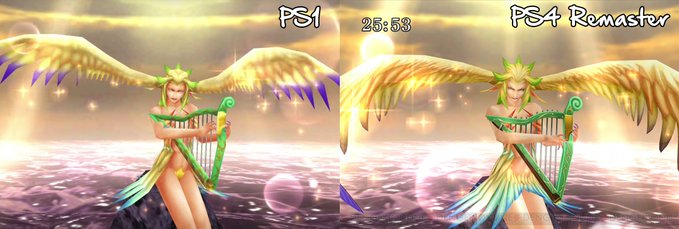 As a project that’s been a long time in gestation though, we do at least have a better idea of the challenges Square Enix faced to make it happen at all. If — and only if — you can accept all the shortcomings we’ve covered here, the remaster does give an easy way to play one of the biggest budget JRPGs of its era, but to be honest, I expected more.
As a project that’s been a long time in gestation though, we do at least have a better idea of the challenges Square Enix faced to make it happen at all. If — and only if — you can accept all the shortcomings we’ve covered here, the remaster does give an easy way to play one of the biggest budget JRPGs of its era, but to be honest, I expected more.
Final Fantasy VIII Remastered Is as Frustrating and Amazing as the Original
I’ve often joked that the reason Final Fantasy VIII never got remade is because it’s a terrible game. That’s hyperbole on my part, but FFVIII is the most controversial of the PS1-era Final Fantasy games. Final Fantasy VII is an enduring classic and most hold Final Fantasy IX in high regard. FFVIII? To say it’s divisive would be an understatement. As someone who isn’t exactly fond of this entry, I find myself in the unique position of having to review its remaster. To get it out of the way: Yes, this is the best version of Final Fantasy VIII, but don’t expect it to change your mind if you were never a fan.
Final Fantasy VIII is an inconsistent remaster. Let’s talk about the good first. Character models and cutscenes come to life in stunning, vivid detail. Gone are the comically pixelated faces that generated a thousand memes. Menus have gotten a bump in resolution, as have the character portraits. While the character’s textures look crisp and detailed, their polygon count isn’t any higher. Blocky arms and legs are very visible from certain angles. Small polygonal count aside, the characters look better than ever.
While characters and cinemas are up to modern-day graphical standards, the same isn’t true of backgrounds. As before, FFVIII features static CG-rendered backgrounds. These backgrounds looked absolutely fantastic back in the day, especially compared to the characters. Unfortunately, the backgrounds are the most disappointing aspect of this remaster. Though given a resolution boost, backgrounds are noticeably blurry and washed-out. It’s a shame because they are among some of the best backgrounds from the PS1 games. They should have looked much better than they do here.
They should have looked much better than they do here.
Along with enhanced visuals, the remaster has a number of gameplay tweaks. Players can disable random encounters and explore the world at their leisure. They can also play at three times normal speed. This is a great way to level boost and grind for magic. Players can also enter battles with maxed out HP and ATB and enable Limit Breaks at any time. The Steam version lets users possess all items (with some exceptions), have all abilities, maximum Guardian Force level, maximum Gil and Magic, and possess all Triple Triad Cards. These features allow players to have a more tailored experience.
Aside from better graphical and gameplay tweaks, this is still very much the same Final Fantasy VIII experience of old. As I said up top, this is one of the more controversial entries of the series. Gameplay-wise, the biggest point of contention is the Draw and Junction system. While there is still a traditional leveling system (to an extent), players can only get the most out of their characters by “junctioning” them to Guardian Forces.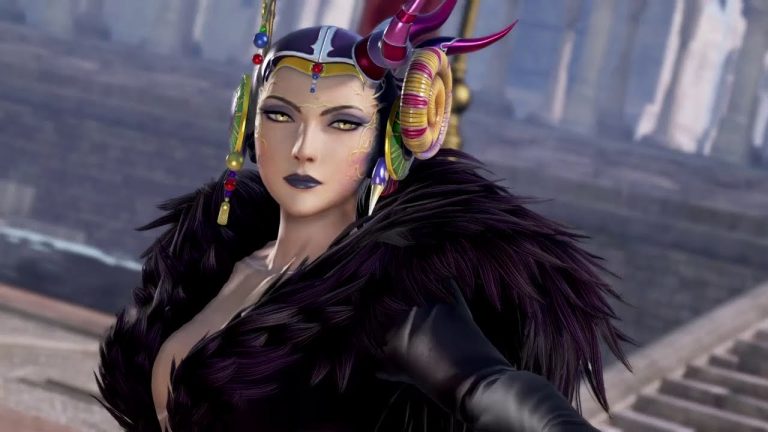 These powerful beings enhance attributes like attack and defense. Though one can automatically distribute magic and junction abilities, it is a more involved process compared to other FF games. The added complexity is great for some, annoying for others.
These powerful beings enhance attributes like attack and defense. Though one can automatically distribute magic and junction abilities, it is a more involved process compared to other FF games. The added complexity is great for some, annoying for others.
I never had a problem with the Junction system because you can easily hit ‘Auto’ and call it a day. My main beef lies with the Draw system. You don’t automatically have magic like in previous installments. Instead, you draw magic from enemies. As with other entries (and most RPGs), you use magic to cast spells on enemies and on yourself. Magic also boosts your stats. The more magic you add to a stat, the stronger it becomes. This is where the problem comes in. If you want to max out your characters’ stats then you’ll have to spend a good portion of battles sucking up magic from enemies. Having to do this for every character is one of the most annoying grinds I’ve ever experienced in an RPG and it’s still a pain now.
You’re free to use magic against enemies and to heal and boost yourself. However, since magic affects your stats, using magic will make you weaker. This effectively forces players to hoard their magic and rely on Guardian Forces to dish out heavy damage. You’ll have to watch the same summoning sequences countless times during battles since you cannot rely on magic. Yes, you can set the game to play three times faster, but it’s still annoying to repeatedly watch the same cinematics. Pun heavily intended, but the Draw system sucks.
However, since magic affects your stats, using magic will make you weaker. This effectively forces players to hoard their magic and rely on Guardian Forces to dish out heavy damage. You’ll have to watch the same summoning sequences countless times during battles since you cannot rely on magic. Yes, you can set the game to play three times faster, but it’s still annoying to repeatedly watch the same cinematics. Pun heavily intended, but the Draw system sucks.
My other beef comes with leveling. Attaining a high level is almost not worth the trouble since enemies scale with you. That means foes from early parts of the game are every bit as strong as the ones in latter portions. You’ll have better equipment and stronger GFs at your disposal, but having enemies scale with you drains the fun out of an RPG for me. But I realize this is a personal grievance and that some players appreciate how enemies scale with them.
Other than the Draw system and enemy scaling, I like everything else FFVIII has to offer. The cinemas still look awesome and the score is easily one of the best in the series. The more realistic art design still holds up and continues to conjure the same sense of wonder it did before. I even enjoy the convoluted storyline thanks to the colorful cast of characters that drive it forward. Everything people loved about FFVIII remains intact.
The cinemas still look awesome and the score is easily one of the best in the series. The more realistic art design still holds up and continues to conjure the same sense of wonder it did before. I even enjoy the convoluted storyline thanks to the colorful cast of characters that drive it forward. Everything people loved about FFVIII remains intact.
Recommended by Our Editors
Final Fantasy IX Hits iOS, Android
Final Fantasy VII Hits iOS
Final Fantasy VII Remake Producer Addresses Fans’ Fears
Despite my qualms with Final Fantasy VIII, it has admittedly aged very well. It is still a unique JRPG experience even in 2019. It has a cool love story, an amazing soundtrack, and a gorgeous visual design. While this is the best way to play the game, the remaster isn’t on the same level as the ones FFVII and IX received. That’s sad since this is arguably the best looking of the PS1-era FF titles.
If you’re a fan of FFVIII then this one is a no-brainer. If you’re like me, you can skip this remaster and spare yourself the headache. Final Fantasy VIII is an objectively good RPG but it’s still not an experience I wish to relive.
Final Fantasy VIII is an objectively good RPG but it’s still not an experience I wish to relive.
Get Final Fantasy VIII – Remastered from the Humble Store(Opens in a new window)
Get Our Best Stories!
Sign up for What’s New Now to get our top stories delivered to your inbox every morning.
This newsletter may contain advertising, deals, or affiliate links. Subscribing to a newsletter indicates your consent to our Terms of Use and Privacy Policy. You may unsubscribe from the newsletters at any time.
Thanks for signing up!
Your subscription has been confirmed. Keep an eye on your inbox!
Sign up for other newsletters
Review Final Fantasy VIII Remastered
Review
34
The classics are back in a slightly retouched reissue
Credits:
Azamat Tegaev (Azzy)
Editing:
Mikhail Shaginyan (ACE)
Denis Korolev (SkyerIst)
Ilya (OkaRin)
Date:
07. 12.2019 15:10
12.2019 15:10
20
5
5
popular emotions article
Platforms:
SWITCH
PS4
ONE
PC
Developer:
Square Enix
Publisher:
Square Enix
Genres:
jRPG
With the advent of the CD format and the first PlayStation Squaresoft began to supply their games with a large number of beautiful screensavers with incredible graphics at that time.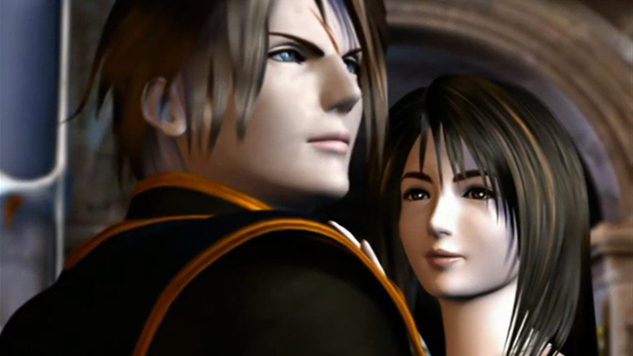 Final Fantasy VII introduced the trend for such cutscenes, and Final Fantasy VIII took the theme even further by offering character control during some of the cutscenes. This made a lasting impression, but inflated the size of the game to four discs.
Final Fantasy VII introduced the trend for such cutscenes, and Final Fantasy VIII took the theme even further by offering character control during some of the cutscenes. This made a lasting impression, but inflated the size of the game to four discs.
Fortunately, digital downloads from PSN , Xbox Live and 9 can now be dispensed with0031 Nintendo eShop without having to juggle CD . Over the years, Sony’s console exclusive has made its way to all other systems, and the space that the game takes on internal memory no longer seems like something incredible. Given the release of the re-release, we decided to return and recall the cult game of the Golden Age jRPG .
Final Fantasy VIII is set in a fantasy sci-fi world and revolves around students at a military academy that produces elite mercenaries. Luxurious intro with a battle under the theme “ Liberi Fatali is still as exciting as the PS1 , which is great.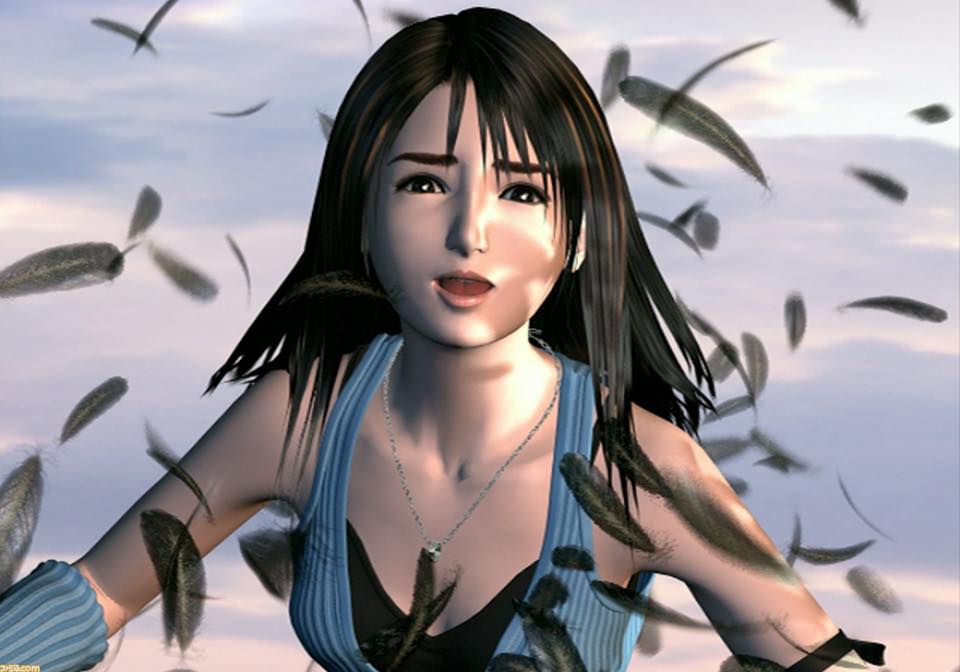
Screensavers FFVIII are still very spectacular, but the quality of the video stream is very low. Square Enix did absolutely nothing to significantly increase the clarity of videos, as a result, on a large TV screen, the picture suffers from compression artifacts and looks blurry. This is surprising, given that the company has its own studio for creating CG of transcendent quality and reconstruction technology using neural networks.
Fortunately, the plot itself does not disappoint and invites you to take part in an international conflict, join the ranks of elite soldiers and get your first personal contract. In parallel with this, we are introduced to new heroes and reveal some of the features of the world.
The line about the school of mercenaries and the confrontation of states ends about halfway through the game. Further, the narrative becomes more fantasy, explanations of what is happening do not always seem logical and often resemble banal “pianos in the bushes”.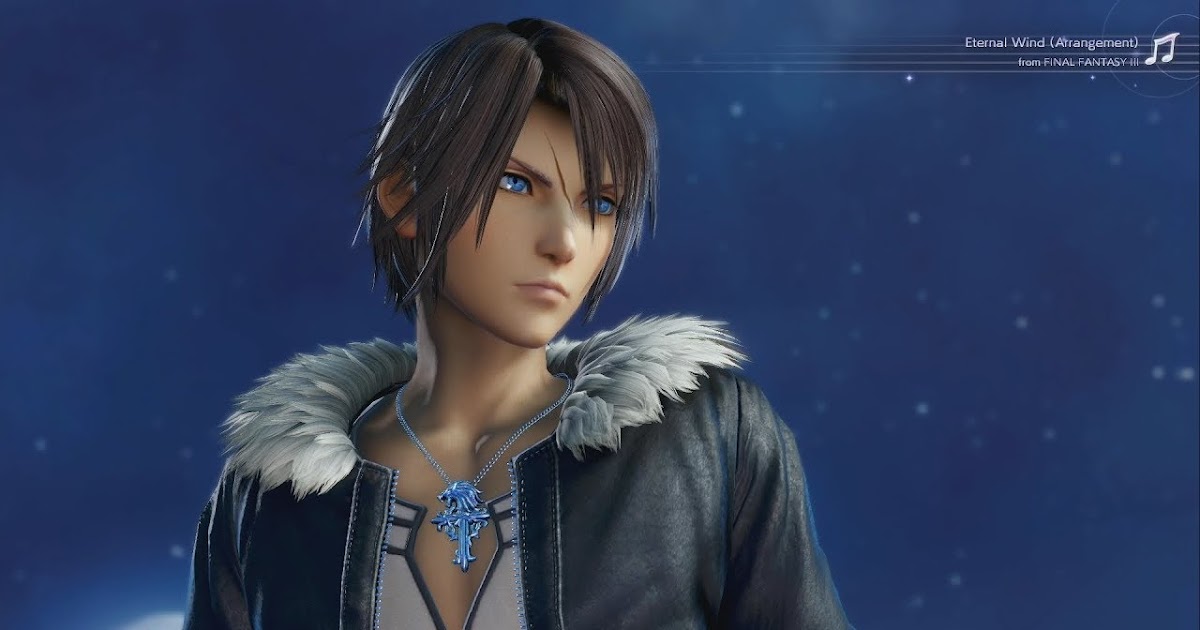
FFVIII has a lot of unexpected twists and epic battles that twist the story famously. Players will be in space, and this is one of the few games where the theme of time travel is well explored. The contrast between the first and second halves serves as a good tool for revealing the characters.
The characters are well written, the combat skills and characteristics of each are closely intertwined with his character and backstory. There are six people in the team with their own nuances and interests.
Project history
-
10/12/2022
Square Enix announced the closure of the battle royale Final Fantasy VII: The First Soldier — the game was released less than a year ago -
04.10.2021
It’s Official: The Last of Us 2 Coming to PC via Cloud – PS Now October Update Revealed -
03/15/2021
The best parts of Final Fantasy according to Official PlayStation Magazine -
02/21/2021
Final Fantasy VIII with photorealistic graphics — a fan amazingly recreated one of the locations of the classic jRPG -
01/08/2021
Get ready, Final Fantasy fans: Xbox Game Pass will continue to grow in games in the series this year and beyond -
view all
Flat locations and updated 3D models look much better on a small handheld screen than on a TV
The developers slightly improved the models of characters, enemies and those objects that were originally three-dimensional.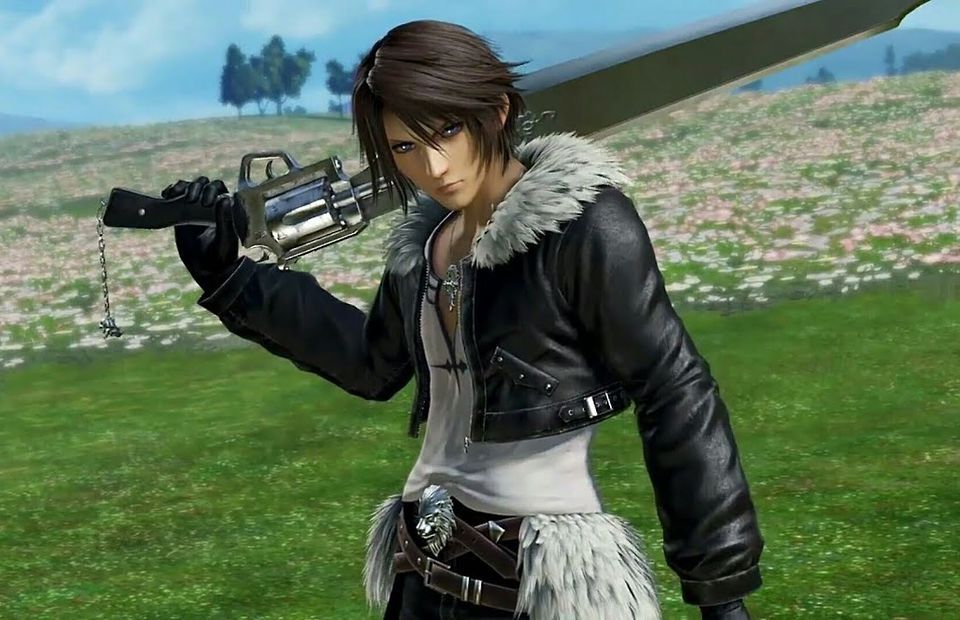 The updated graphics look like an alien from the PSP era, but it looks noticeably better than the PS1’s mess of dots. The new models are well-smoothed and allow you to see faces and some other design elements that were previously simply lost in the pixel mush.
The updated graphics look like an alien from the PSP era, but it looks noticeably better than the PS1’s mess of dots. The new models are well-smoothed and allow you to see faces and some other design elements that were previously simply lost in the pixel mush.
The animation of the heroes has not changed — the movements are torn, and the position of the bodies in some moments is unnatural. The locations have not changed either, which, like twenty years ago, are made in the form of a two-dimensional background. On modern TVs, they look very dull. This is unpleasant, given the heights fans achieve when working with frame reconstruction algorithms using neural networks using the example of the same Final Fantasy IX .
It is worth noting here that in handheld mode on Nintendo Switch game looks good. Flat locations and updated 3D models look much better on a small handheld screen than on a TV.
In addition, the updated version has three new features that are designed to make the game easier for those who want to get acquainted with the story without delving into the complexities of the combat system. At any time, you can speed up the game by three times, turn off random battles and gain immortality with a constantly charged special attack.
At any time, you can speed up the game by three times, turn off random battles and gain immortality with a constantly charged special attack.
In Final Fantasy VIII, it is necessary to upgrade not only heroes, but also special monsters — guards, which are equipped by fighters. Having taken possession of one or another mythological creature, the hero not only gets the opportunity to call him during the battle, but also opens a slot for pumping abilities. Depending on the animal, these indicators vary. For example, Ifrit opens his master the ability to improve strength, and Quetzalcoatl — the amount of vital energy.
Visual overview
Addictive gameplay
Atmosphere — it envelops and absorbs
boy themes
Tough bosses
Cool hero
Classic — never outdated
Girls
Bleeding
Lots of loot
Fireballs and curses
Open world
This soundtrack makes you want to listen to holes
Popular series — this game already has millions of fans
Famous developer — we love and respect him
Twisted plot — impossible to tear yourself away
the wow factor blooms and smells
Replayability — can be played and replayed for many years
Subtitles for the deaf and dumb
Epic that makes your ass vomit
Zhopozazhivin
tough villain
We were in a hurry but got the year mixed up
The visual overview is based on the main features of the game and
is
addition to the main review.
In addition, guards can unlock new combat options. For example, a character can learn to absorb health from enemies or turn enemies into cards for the Triad mini-game.
This is not the end of pumping features. The slots opened thanks to the creatures need to be filled with magic. In the game world, magic has a scientific basis, so it does not require mana to use it. Each spell is counted in pieces, like other items in the inventory. Thus, the more units you invest in a particular skill, the stronger it becomes.
Some types of magic are more effective in conjunction with defensive skills, while others are better suited for pumping attackers. There are also many indicators related to resistance to the elements and various negative statuses.
You can replenish magic in some special places on locations, as well as draw it from enemies. For some mini-bosses, it’s really possible to pull off not only some kind of spell, but also guards.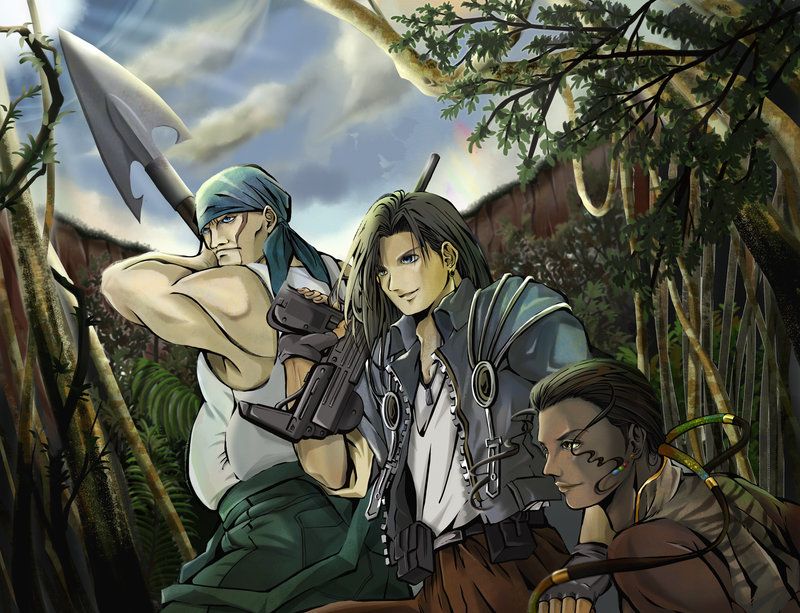 At these moments, you need to be careful, because if you end the battle without taking the monster, there will be no other opportunity. The pumping feature is very important, so at least one of the squad members should always have this option.
At these moments, you need to be careful, because if you end the battle without taking the monster, there will be no other opportunity. The pumping feature is very important, so at least one of the squad members should always have this option.
If you understand the leveling system, it provides ample opportunities for character customization and build creation. Considering that there are many secondary strong bosses in the game, such opportunities allow you to come up with tactics adapted specifically for this or that enemy.
It is also worth noting that all equipped goods, along with the guards, can be easily transferred from one character to another. Moreover, in the course of the story, this will have to be done more than once.
You can’t talk about Final Fantasy VIII without mentioning the music. Nobuo Uematsu has written great pieces that can be listened to outside of the game. Especially the orchestral version of the soundtrack.
Some elements and harmonies in compositions are reminiscent of classics like Richard Wagner and Nikolai Rimsky-Korsakov, but the soundtrack remains original and varied.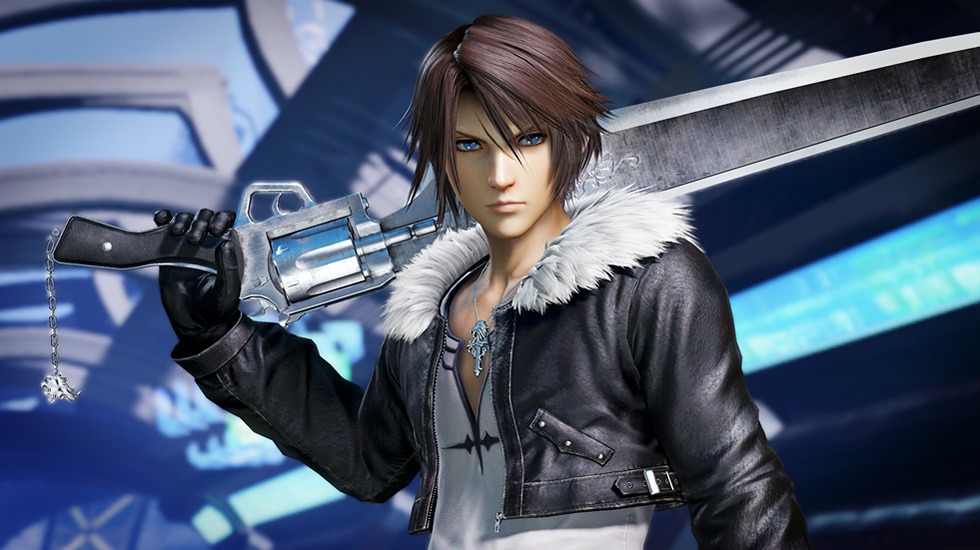 Everyone can find something special for themselves. Epic battle marches give way to more lyrical tunes like the one playing in the city of Fisherman’s Horizon . This music is especially well performed by the choir, accompanied by the orchestra on the official album dedicated to the game. Soft vocals are harmoniously intertwined with the sounds of electronic piano and flute.
Everyone can find something special for themselves. Epic battle marches give way to more lyrical tunes like the one playing in the city of Fisherman’s Horizon . This music is especially well performed by the choir, accompanied by the orchestra on the official album dedicated to the game. Soft vocals are harmoniously intertwined with the sounds of electronic piano and flute.
It is also worth noting that during the card game a very cheerful jump blues plays in the background. The compositions from this “final” are frequent guests in my playlist.
- Comments
- Forum
The developers slightly improved the graphics, so unlike the FFVII port, Final Fantasy VIII Remastered can be watched without tears. Unfortunately, the animations and backgrounds are the same as in the original and seem very outdated. Otherwise, we still have the same game that can captivate for tens of hours with an interesting story, classic mechanics and an approach to developing skills. Especially when playing on the small screen of the Nintendo Switch , which smooths out most of the rough edges.
Unfortunately, the animations and backgrounds are the same as in the original and seem very outdated. Otherwise, we still have the same game that can captivate for tens of hours with an interesting story, classic mechanics and an approach to developing skills. Especially when playing on the small screen of the Nintendo Switch , which smooths out most of the rough edges.
Game completed on:
SWITCH
Correct topics:
Yes
Duration:
80 hours
1-2
evil shit
3-4
not necessary
5-6
public catering
8 7-8
just right
9
very cool
10
masterpiece!
is what you wanted from the very beginning
Author Kirill Sokolov Reading 7 min.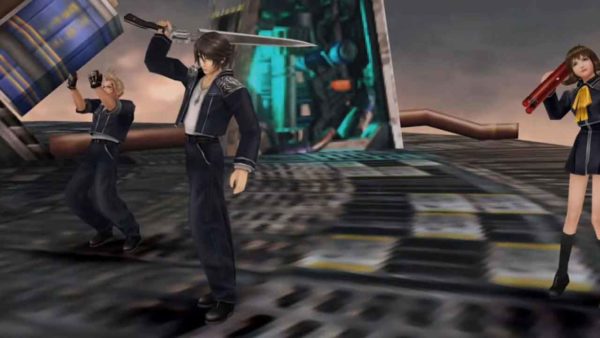 Views 95
Views 95
If you’re here to get a completely objective review of Final Fantasy VIII Remastered, I’m afraid you’re out of luck. I’m too big of a fan of Squall and his gang to pretend I don’t have a positive vibe when it comes to this.
But you didn’t come here for objective reviews. Like me, you’re probably already a big fan of the original game and you want to see if all the marks in this Remastered version are what you need.
TL; DR is simple; it’s almost true, it’s so close to the truth that it’s definitely worth buying and keeping in your collection forever.
Content
- Song of Victory
- FINAL FANTASY VIII: Remastered
- Good
- Bad
- What do you like the updated fantasy VIII
- WITH FINAL FANTASY VIIII: REMASTERED 9007 9007 VIII: Remastered? Oh yeah
- Victory Song
- Final Fantasy VIII: Remastered
Victory Song
Final Fantasy VIII: Remastered
Mary Poppins from Remasters
FFVIII: Remastered is almost perfect in every way. Some graphical glitches could be better, but nothing that detracts from the game.
Some graphical glitches could be better, but nothing that detracts from the game.
Good
- The gameplay is identical to the original.
- All sprites have been processed in HD.
- Extra features like full ATB sensors are actually nice.
- It’s only 20 dollars
Bad
- Some weird graphical glitches
- No FPS increase
- No visual enhancements other than moving 3D models
What you like
about Final Fantasy Renewed VIII
Before we get to the changes you’ll like, let’s start with what changes they didn’t make that you’ll like. It’s not a remake like the new Final Fantasy VII; it’s the exact game you played when you were young. Some people will say it’s negative and that’s okay. This game is not for them; this is for you and me.
We know that a good remaster takes the original gameplay and adds as little as possible while improving everything graphically. Give us a game that plays, remember, with a fresh coat of paint, and that’s all we need. This is what Square Enix did with FFVIII and I’m very happy with it.
Give us a game that plays, remember, with a fresh coat of paint, and that’s all we need. This is what Square Enix did with FFVIII and I’m very happy with it.
As you remember, this game has all the game mechanics. ATB, pushing limits, Junction System is really the best system, Materia sucks, come to me — even Triple Triad is exactly what you need.
The additions they made to Thankfully, the gameplay is completely optional and adds more to the experience than I thought. New additions are the ability to play the game at 3x speed, the ability to remove random encounters, and always have full ATB and Limit intervals.
The characters in Final Fantasy VIII: Remastered come to life in ways you couldn’t have imagined 20 years ago.
Although I was skeptical at first — I’m still averse to random encounters — the ability to speed up a tedious journey is extremely useful, especially when you start traveling across continents in Ragnarok. Filling the ATB all the time may seem like a scam. This really helps with the slow grind that exists early in the game and can just be turned off.
Filling the ATB all the time may seem like a scam. This really helps with the slow grind that exists early in the game and can just be turned off.
I think this is my favorite thing about these supplements; they don’t all the time. With a single press of the joysticks, you can easily activate or deactivate one, two or all three bonuses. The only thing I don’t really like is the random respawn toggle, as half the fun of the game is completely leveling up your character. The game feels a bit pointless without the random spawn.
The updates they made to the visualization are just fine. I was hoping to see a little more than them, but we’ll get to that later. All moving objects in the game have been changed, and maybe all moving objects that you can interact with at least. The background is still painted over with slightly moving parts.
So, all the monsters, all the heroes, cars, buildings — like that, later — and even the draw and save points have been redone.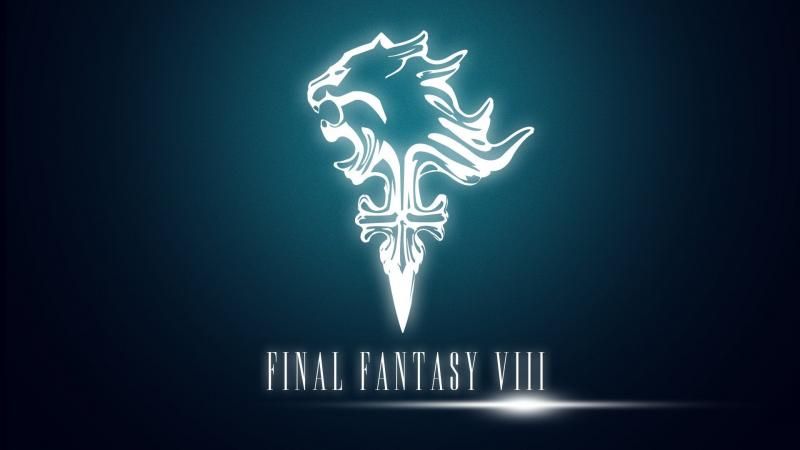 in gorgeous HD. Oddly enough, the game plays in a window with black borders around it, which shows they haven’t scaled everything. That’s why all these screenshots have black borders; you will see them in the game too.
in gorgeous HD. Oddly enough, the game plays in a window with black borders around it, which shows they haven’t scaled everything. That’s why all these screenshots have black borders; you will see them in the game too.
Square Enix put icons for new abilities in this black area, which is great news though. There is not much real estate here, so having them there does not allow them to hide what is happening.
Although the game runs smoother and the characters in Final Fantasy VIII: Remastered come to life in ways you couldn’t have imagined 20 years ago. Now you see that these are people, not disgusting monsters who are told that they are beautiful.
What you don’t like
in Final Fantasy VIII: Remastered
If you look at the screen above, I think you can see one of the main problems with Final Fantasy VIII: Remastered. Some of the new HD models are just awful. Of course, these are HD models now, but if you don’t add new textures, then what’s the point? Clearly, Square Enix had to make some decisions about what they would update and what not.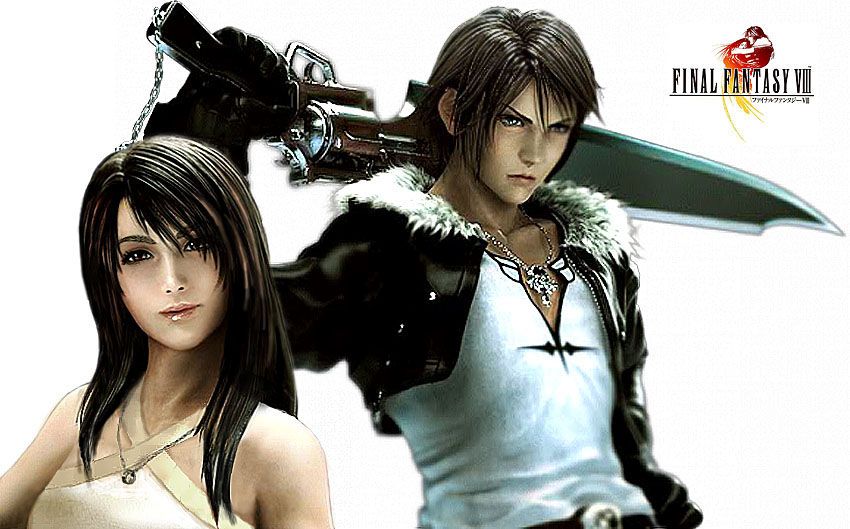 Maybe it was done to keep costs down, I don’t know, but there were some very bad choices.
Maybe it was done to keep costs down, I don’t know, but there were some very bad choices.
Each time a wave hits the shore in the first movie there might be 10 frames and therefore it looks like a badly made GIF.
It also doesn’t seem to be working on anything other than the 3D models I mentioned earlier. I’ve compared the Remaster to the original game and there doesn’t seem to be much of an improvement in graphical fidelity. It’s like how Square Enix added a Gaussian blur to the background, fixed the color blur, and called it good.
When you play on the PlayStation Pro it’s a bit disappointing and the background still looks so bad. The cutscenes were not even decorated. In 1999, the cutscenes for Final Fantasy VIII were superior to anything at the time, and I drooled in anticipation — especially after seeing the work they put into the Final Fantasy VII remake — but nothing. It’s almost exactly the same, just a little sharper.
Fixing the last graphical issue can be tricky, but I believe it should. Cutscenes and moving backgrounds play at tiny frames per second. Each wave hitting the shore in the first movie is about 10 frames long, so it looks like a badly made GIF.
Same with the background. Notice the curtains in Squall’s room in the scene above. They have four, maybe five positions. I would like them to interpolate or add frames to these effects to make this remaster smoother and more modern.
Should I buy Final Fantasy VIII: Remastered?
Oh yes
Apart from these graphical issues, I am enjoying every second of this game. Of course, I didn’t finish the game until I reviewed it, I don’t take shortcuts by playing what I consider to be the best of the Final Fantasy franchise. I still have at least 200 hours left, but every minute is as good as I remember it.
Would I like the game to have a complete graphics overhaul like Final Fantasy VII? Sure, but if that were the case, Square Enix would change the whole game along with it.
